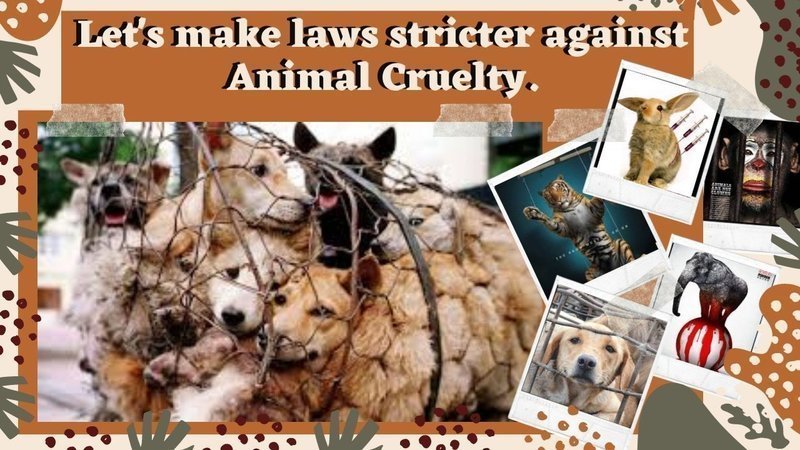The discourse surrounding animal cruelty legislation evokes impassioned reactions, polarized opinions, and a kaleidoscope of emotions among various segments of society. It raises profound questions about our ethical responsibilities as stewards of the earth and the creatures that inhabit it. In light of the increasing visibility of animal abuse cases, many proponents advocate for stricter laws. However, the intersection of public opinion and policy remains complex, revealing not only societal convictions but also the underlying motivations driving these sentiments.
At the heart of the debate over stricter animal cruelty laws lies an unsettling reality: the vague definitions of animal abuse, existing loopholes in legislation, and the frequently lenient repercussions for offenders. In numerous jurisdictions, definitions of animal cruelty can be nebulous, often failing to encompass the full spectrum of abusive practices. This lack of clarity emboldens potential offenders, allowing egregious behaviors to slip through the cracks of the legal system. The disjointedness between public outrage and legislative action raises the question: why do policies often lag behind societal expectations?
Neglect is one of the most common forms of animal cruelty, and it often goes unnoticed until a situation becomes dire. Public awareness campaigns have helped shed light on these hidden abuses, prompting collective action. Yet, even with heightened awareness, communities struggle to convert disdain for animal cruelty into actionable legislation. For instance, how many times have we seen viral videos showcasing neglect and abuse, followed by public outcry, yet no substantial changes in laws ensue? This disheartening phenomenon hints at deeper systemic issues involving resource allocation, political will, and bureaucratic inertia.
Public opinion on animal rights has evolved dramatically over the last few decades. In a world where heartwarming pet videos dominate social media feeds, it seems paradoxical that laws surrounding animal protection remain outdated. Many citizens now view animals more as sentient beings deserving of rights rather than mere commodities or property. This shift in perspective could be attributed to an increasing acknowledgment of animal consciousness and emotion, propelled by scientific research on animal behavior and ethics.
However, despite this shift, the legislative framework regarding animal welfare remains woefully insufficient. The existing laws are often riddled with stipulations that undermine their effectiveness. For instance, dangerous loopholes allow certain forms of animal exploitation—including factory farming, puppy mills, and animal testing—to persist unchecked. These practices perpetuate cycles of cruelty, creating a chasm between societal expectations and legal accountability. This discrepancy signifies an urgent need for reform but also reflects a paradox in public consciousness; while the desire for change grows, the mechanisms for implementing that change falter.
Furthermore, cultural factors play a significant role in shaping attitudes toward animal cruelty laws. There are varying degrees of acceptance regarding animal use in different regions, influenced by traditions, economic dependencies, and societal norms. In some cultures, animals are regarded primarily as agricultural tools or sources of entertainment. This entrenched viewpoint complicates efforts to implement stricter legislation and evokes resistance among those who perceive animal welfare advocates as imposing external values on deeply rooted traditions.
Moreover, there is often a misconception that harsher laws alone will eliminate animal suffering. While stricter penalties may serve as deterrents, the efficacy of legislation is contingent on proper enforcement and public education. Many authorities lack the resources or training necessary to adequately address and investigate claims of animal abuse. Consequently, legislation—regardless of its severity—becomes ineffective if not paired with robust enforcement mechanisms and societal commitment to change.
The growing backlash against complacency in animal welfare is vibrant, fueled by grassroots movements, social media campaigns, and influential public figures. The amalgamation of these forces underscores the necessity for a paradigm shift in how we legislate animal cruelty. Advocacy organizations rally for more comprehensive policies, including the implementation of preventative measures such as education initiatives focused on humane treatment, responsible pet ownership, and empathy-building exercises targeted at children. These strategies cultivate a culture of compassion that can result in proactivity rather than reactionary measures.
Additionally, public sentiment offers a double-edged sword. While a swell of support can catalyze change, it can also lead to superficial activism—what some call “slacktivism.” This term encapsulates the phenomenon of merely liking posts or sharing videos, which, while raising awareness, often lacks the tangible impact necessary for real-world change. Striking a balance between raising awareness and mobilizing action necessitates an informed citizenry willing to engage with their local representatives and advocate for meaningful reform.
In examining the nexus between public opinion and policy, it becomes increasingly clear that lawmakers must heed the growing imperative for change. Stricter laws are indeed a salient component of a more humane society, yet they must be complemented by rigorous enforcement and cultural shifts. The journey toward comprehensive animal protection laws will not materialize overnight; it will require sustained efforts, a willingness to engage in difficult conversations, and a commitment to transcend cultural divides.
Password to progress lies within a collective recognition that animals deserve protection—not just as companions or resources, but as sentient beings with intrinsic value. By weaving together the threads of public outcry, legal reform, and societal commitment, a tapestry of change may yet emerge—a future where the question of animal cruelty is not merely a matter of opinion but an unequivocal standard of justice.








